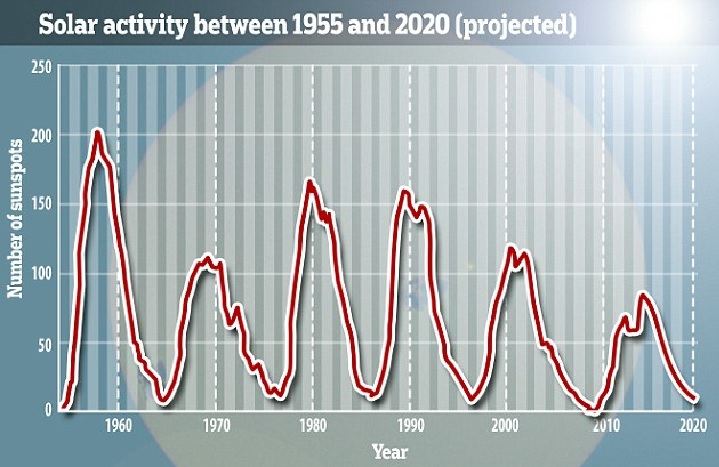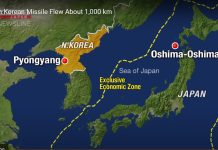Scientists are concerned by the approaching solar minimum, which could plunge Earth into deep freeze.
Are we now heading for a ‘mini ice age’?

Some scientists are claiming we could now be heading for a ‘mini ice age’. It follows concerns that sun is in quietest period for more than a century
Europe has been plunged into a cold snap over the past week as winter is approching, but things were a lot chillier only a few hundred years ago.
The period from the mid-14th century to the 19th century in Europe was referred to as the ‘Little Ice Age’ due to the severity of the climate at the time.
Frost Fairs used to spring up on the largest rivers in European countries. For example, the River Thames in the latter part of this period froze over at least 23 times since the 1300s – the last time in 1814.
But some scientists believe we could now be heading for a ‘mini ice age’ following concerns that the sun is currently in its quietest period for more than a century.
In June, Vencore Weather claimed the sun had gone into ‘cueball mode’, with images from Nasa showing no large visible sunspots on its surface.
Astronomers said this was not unusual, with solar activity going up and down in 11-year cycles – with us currently being in Cycle 24, which began in 2008.
However, researchers warned that if the current trend continues, then the Earth could be heading for a ‘mini ice age’. Solar activity remained low for around four days after June 4, which followed another period of inactivity in February when an image showed the sun in cueball mode. The blank sun signalled that ‘the next solar minimum is approaching’.
The previous solar cycle, 23, peaked in 2000-2002 with many furious solar storms. During a solar maximum, huge sunspots and intense solar flares are a daily occurrence, while the opposite occurs during a solar minimum. Solar flares are almost non-existent while whole weeks go by without a sunspot to break the monotony of the blank sun – and this is what we are experiencing now.
The longest solar minimum on record, the Maunder Minimum of 1645 to 1715, lasted an incredible 70 years, with sunspots rarely observed during this period. The period of quiet coincided with the Little Ice Age, a series of extraordinary bitter winters in Earth’s northern hemisphere. Many researchers believe low solar activity, acting in concert with increased volcanism and possible changes in ocean current patterns, played a role in this.
A study last year claimed to have cracked predicting solar cycles – and says that between 2020 and 2030 solar cycles will cancel each other out.
And this, say experts, will lead to another Maunder Minimum, an Earth deep freeze.













[…] The period from the mid-14th century to the 19th century in Europe was referred to as the ‘Little Ice Age’ due to the severity of the climate at the time. strangesounds.org […]